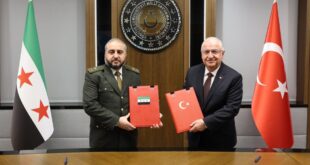CAIRO — As Muslims held a mass prayer at Cairo’s Mustafa Mahmud Mosque, the personal tragedies of Sudanese refugees continued to unfold a few metres away, screened off from the Eid Al Fitr festival like an eyesore.
For the rituals marking the end of the Holy Month of Ramadan, the authorities had temporarily erected coloured screens to hide the chaotic makeshift camp from the mosque, one of Cairo’s most prominent.
Behind the screen, Mary Dudu’s family was debating whether the 35-year-old Sudanese woman’s body should be buried in Cairo or in Sudan.
Four days after her death from sudden respiratory problems, her body still lay in the morgue, as sanitary conditions on the busy square in middle of the Egyptian capital’s upscale Mohandeseen district continued to deteriorate.
Dudu was one of hundreds of Sudanese who decided to camp out close to the UN refugee agency’s Cairo headquarters on September 29 to push for the asylum they feel they were denied.
She was the fifth member of the group to die because of complications related to dire health conditions at the protest site.
“It was the cold,†Christina, an elderly member of Dudu’s family, told AFP.
The protesters sleep under the city’s polluted skies, with no access to drinking water and sanitation and as night temperatures start to dip in the Egyptian capital.
“Many have not had a shower since arriving here,†a protester said.
They want to be resettled in a third country as they believe they will find similar or worse conditions if they return to Sudan.
“We will remain here until the UN meets our demands,†Abdullah Mussa, one of the leaders of the protest, told AFP. The majority of the demonstrators are from south Sudan. Others hail from the restive eastern provinces and some, including Mussa, from the war-torn western region of Darfur.
Many have not returned to their squalid Egyptian homes for several days.
Dudu had been there for almost 30 days when she was rushed to hospital with breathing problems, dying shortly afterwards. Egypt has deployed several truckloads of security forces in the area, but stopped short of forcibly dispersing the demonstrators.
The UN High Commissioner for Refugees (UNHCR) has a list of nearly 20 refugee demands. “Most of the demands of the Sudanese demonstrators are beyond the UNHCR’s control,†the agency said in a statement released Wednesday.
“There are, obviously, some issues within UNHCR’s ability to influence but this can only be achieved through consultation and constructive dialogue, not by means of intimidation,†it added.
The protesters allege that the UN often turns a blind eye to reports about abuses that the handful of refugees who find jobs suffer from their employers.
They also accuse police of routinely harassing them, including arbitrary arrest and detention for days.
The UNHCR said it was addressing some of the complaints through “training of relevant government officials, civil society actors, and the media, on refugee rights and obligations and state responsibility.â€
There are 14,400 Sudanese refugees registered in Egypt, many of them from southern Sudan where a peace deal earlier this year ended decades of war, but also from western and eastern regions where fighting continues.
The UNHCR said that the north-south peace deal created a new political reality in Sudan and paves the way for the return of hundreds of thousands of Sudanese refugees from neighbouring countries. But it insisted there will be no forced repatriations. “It is and remains the UNHCR’s mandate and responsibility to ensure that the fundamental prohibitions against expulsion and forced returning of refugees are fully respected,†the agency said.
 Eurasia Press & News
Eurasia Press & News



